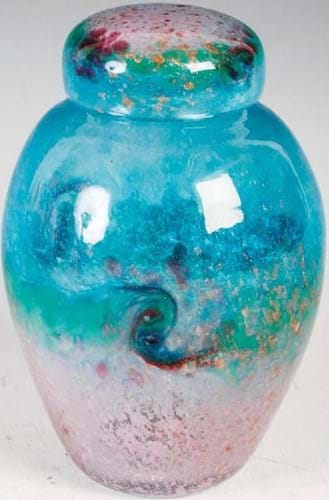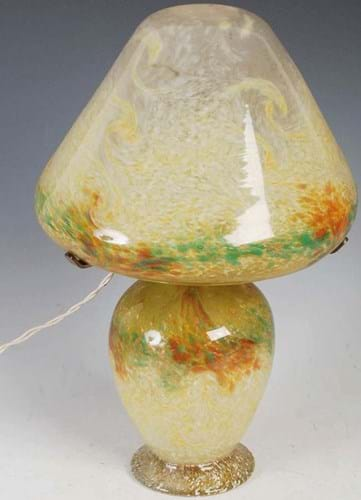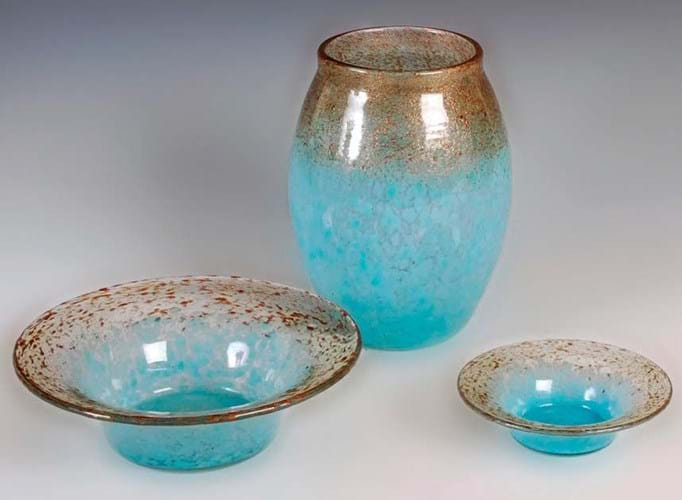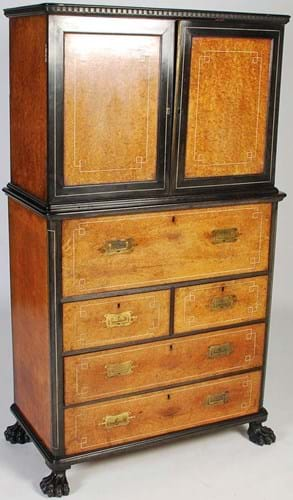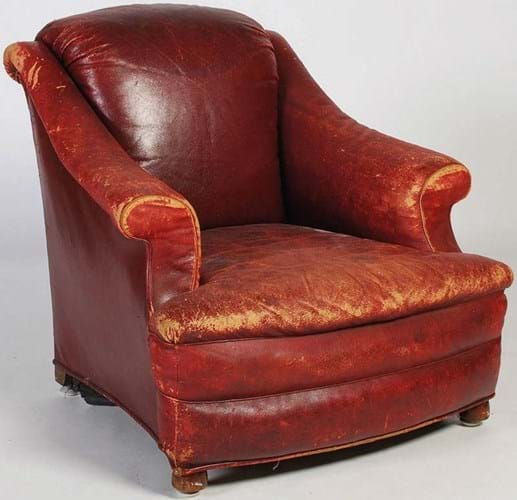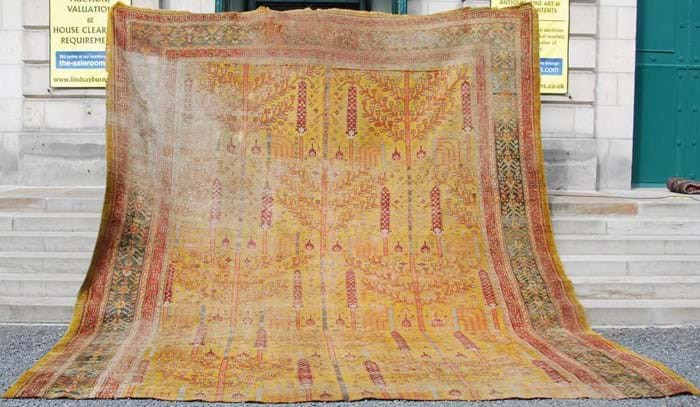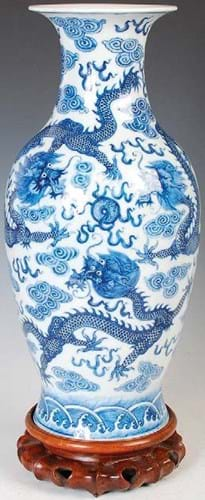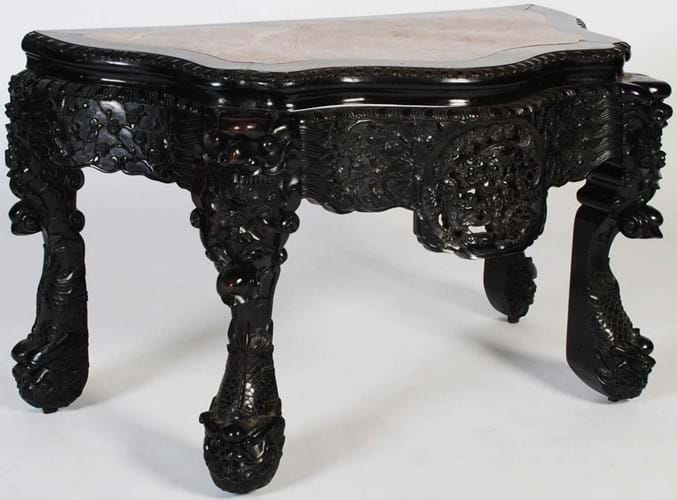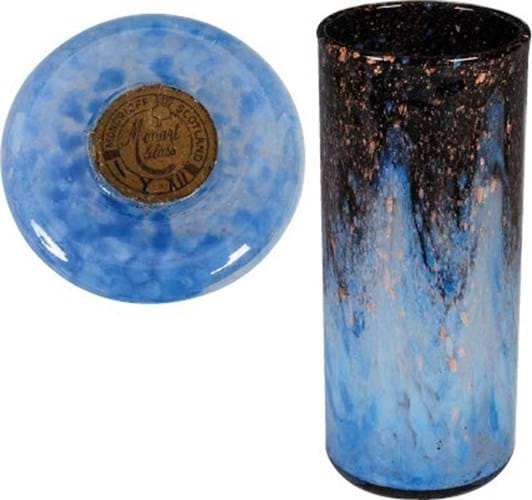
In its 1930s heyday, Monart glass – Scotland’s answer to the French art glass movement – was celebrated for its vivid, spiralling colours in the fashionable emporiums of London, New York and Melbourne.
The product of an unlikely collaboration between the Spaniard Salvador Ysart and Isobel Moncrieff at an industrial glassworks in Perth, this distinctive cased glass was manufactured by family members in two distinct phases from c.1922 until c.1961: first under the name Monart at Moncrieff’s and from 1946 at the Shore Works as Ysart Brothers Glass.
A collection of pre-war Monart glass was among the attractions of the Antiques & Fine Art at Lindsay Burns (20% buyer’s premium) in Perth on July 20-22.
Some pieces had a provenance to the prolific early-bird collector Michael Parkington (a collection sold in two parts at Christie’s South Kensington in 1997 and 1998).
Family links
Half-a-dozen lots came from a vendor with family links to the Moncrieff works.
This source included a number of rarities that strayed from the typical production piece. They came with their original paper labels that, including codes for sizes, shapes and colour, combination, are always a bonus. Unlike post-war Ysart, which typically carries an acid-etched signature, very little Monart was ever signed.
Sold at £450 was an unusual 7in (17cm) cylindrical vase (shape L) in mottled dark blue and light blue glass with the golden inclusions achieved by adding gold powder, or aventurine, into the mix – an ingredient supplied by the Gilbert Martin factory in Paris.
A rare 8in (20cm) jar and cover (shape VJ) in mottled blue, green and pink glass with gold coloured inclusions and three whorls made £580.
Table lamps are a rare form. The auction record for Monart stands at £4000 for a seemingly unique acid etched ‘cameo’ lamp sold by Lyon & Turnbull in 2004.
The example at Lindsay Burns in mottled opaque greens and purple with gold inclusions had its original lacquered brass fitting and labels to both base and shade. It brought £1750. A single lamp shade of mushroom form in mottled yellow, blue and purple glass made £420.
Auctioneer Nick Burns had been quick to spot a trio of baby blue and aventurine pieces in the so-called Royal Wedding Gift pattern. As a fine art valuation student at Southampton, he had written a dissertation on Monart and corresponded with the Palace regarding 33 similar pieces it received in 1947 to mark the wedding of the princess Elizabeth and Philip Mountbatten.
A vase and two bowls of different sizes took £480.
Titled properties
This auction, Lindsay Burns’ first-ever three-day event, was held online only and included a range of titled properties from throughout Scotland.
The firm has enjoyed a long-term relationship with Kilmany House, a Fife property home to the Anstruther-Gray family.
Nick Burns recalls helping out his parents with a removal van at the 16-bedroom house during his school holidays in the early 1990s and it had “given up some good things over the years”.
The impending sale of the house yielded lots for Edinburgh firm Lyon & Turnbull earlier this year with Burns later asked to assist with the sale of the residual contents during lockdown. The firm removed multiple van loads which will feed several sales: a second tranche will be offered on September 2-3.
The July sale consignment of traditional country house furnishings including two objects that packed a punch in terms of hammer price. The first was a small Scottish Colourist watercolour of The White House, Iona by Francis Cadell (1883-1937) sold at £5200.

Continental Art Nouveau 800 standard silver wine cooler – £4200 at Lindsay Burns.
The second was an impressive 800 standard silver wine cooler with Art Nouveau foliate decoration and stylised lettering reading German Cup and the engraved inscription Won By Lightfoot 1900.
It is thought it had originally been made for a horse race in Hong Kong. Measuring 2ft 3in (68cm) handle to handle and weighing close to 7kg, it was found being used to house a large spider plant. The wine cooler was hotly contested to £4200.
Another property yielding good material during lockdown was in Pitlochry. The estate was cleared after relatives in the south had chosen mementoes via digital photographs.
A full silver chest contained a Victorian 24-place canteen of fiddle, thread and shell pattern flatware (mainly by George Adams, London 1850) in an oak box with a retailers label for Hunt & Roswell of Bond Street, London. With a gross weight of 247oz, it took (£2500-4000).
Sold at £3000 (estimate £800-1200) was a 19th century Anglo-Indian campaign secretaire bookcase. Made in two parts with recessed brass handles to both, it was veneered in amboyna and lined with ebony and ivory.
Eastertyre in Logierait in the north of Perthshire is a Georgian house with links to the Crabbie family of ginger wine and beer fame. A somewhat ramshackle property, it was filled with the type of well-loved antiques that are always popular regardless of market conditions.
Notable lots included an 18th century walnut bachelor’s chest of nice size and colour selling for restoration at £1500 and a late 19th or early 20th century club armchair with sweeping back, scroll over arms and delightfully aged burgundy leather making £1700.
A late 19th century golden Ushak had its issues but, measuring 18ft x 13ft 11in (5.5 x 4.24m) with an ochre field within a blue ground border of repeating floral palmettes, it was a fine and large carpet of a popular European market type.
It had been cut and reduced at one end and was worn down to the weft in one corner where a door opened and closed for decades, but this did not detract too much. It sold for £3600.
A Coalbrookdale Nasturtium pattern cast-iron garden bench, rusting, unloved and heading for the on-site skip, was destined for better days when it was sold for £1300.
With its maritime links, Scotland continues to be a decent source of Chinese and Japanese works of art.
A 16in (40cm) blue and white ‘five dragon’ vase on a carved and pierced wood stand was a family piece, brought back from China by the vendor’s ancestor who worked for the Ben Line Shipping Company c.1900. It was deemed a late Qing piece and sold at £2700.
Full to the brim
A collection of 187 snuff bottles had been found boxed in ice cream tubs in another property that “with only tracks to walk through the flat” took close to two weeks to clear.
Bought by the owner in the 1980s-90s, they were sold in 19 lots for £17,000 to buyers from the UK, US and China with a top bid of £2600 for a lot of blue and white and copper red decorated bottles.
Sold at £9400 (the highest price of the sale save an £11,600 diamond cocktail ring centred with a 3.28ct brilliant cut stone) was a Qing hardwood console table.
Anathema to the simplicity of earlier ‘classic’ Chinese furniture, it had a serpentine red and white marble top, a frieze carved and pierced with flowering prunus blossom branches and a roundel of shishi dogs and four mask, scroll and scale carved supports.
The auction house had taken closer to £20,000 for a similar table some years ago, one that included its original plinth.


